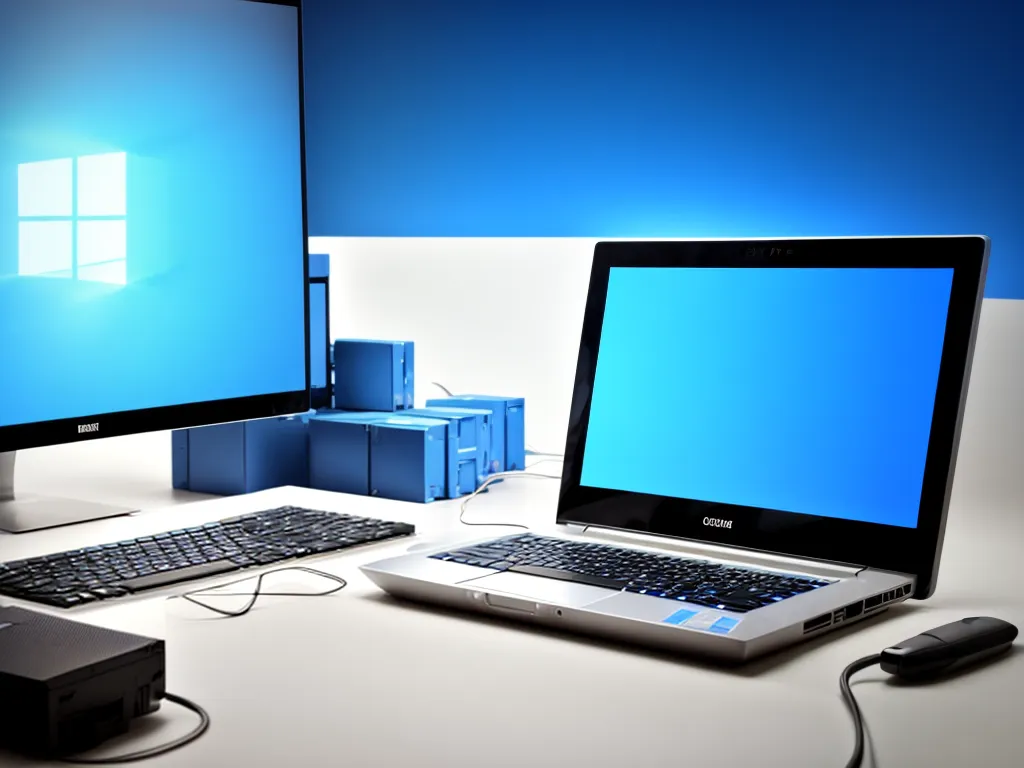
The dreaded blue screen of death – it strikes fear into the hearts of PC users everywhere. As annoying and disruptive as they are, blue screen errors can usually be fixed with a few strategic troubleshooting steps. In this guide, I’ll walk you through the common causes of blue screens and how to resolve them.
What Causes the Blue Screen of Death?
Blue screens, technically called stop errors, occur when Windows encounters a critical system error and is forced to shut down to prevent further damage. Some potential causes include:
Hardware Issues
Faulty RAM, failing hard drives, overheating CPUs, and malfunctioning graphics cards are common hardware-related culprits behind blue screen errors. Outdated drivers can also cause conflicts and crashes.
Software Problems
Buggy software applications, corrupted system files, and incompatible drivers are often to blame for blue screens. Recently installed programs that run at startup are a red flag.
Viruses and Malware
Harmful software like viruses, worms, and trojans can damage system files and settings, leading to a crash. Downloading shady programs makes your PC more vulnerable.
System File Corruption
Critical Windows system files like DLLs can become corrupted over time, causing Windows to crash when they fail to load properly. Registry errors also wreak havoc.
Top Fixes for Blue Screen Errors
To pinpoint the offending issue, I start with the following blue screen troubleshooting steps:
Check the Error Message
The stop code (e.g. IRQL_NOT_LESS_OR_EQUAL) offers a clue about what went wrong. Google it to find targeted solutions.
Update Drivers
Outdated drivers are a leading cause of blue screens. I run device manager and update all drivers, especially graphics, sound, and motherboard.
Update Windows
Installing the latest Windows updates can resolve blue screen bugs caused by faulty system files. I check for updates in Settings.
Clean Boot PC
I boot into safe mode and disable startup programs to see if conflict with a program causes the error. If so, uninstall recently added programs.
Run SFC and DISM
These system file checkers scan for and replace corrupted Windows files that could be blue screening your PC.
Check CPU Temperature
Overheating can crash a PC. I open the case and blast any dust buildup with compressed air. Reapplying thermal paste also helps lower CPU temp.
Test RAM
I remove RAM sticks one-by-one and run a scanner like Windows Memory Diagnostic to check for errors. Faulty memory is a common hardware culprit.
Scan for Malware
A virus scan with Windows Defender or Malwarebytes uncovers any nasty malware that could be destabilizing Windows. I also update antivirus software.
When to Seek Professional Help
If basic troubleshooting fails to pinpoint the blue screen culprit, more advanced diagnostics may be needed. I seek professional help for blue screens in these cases:
- Error message points to an obscure system file issue
- Persistent crashes immediately on bootup
- Problem began after a major Windows update or hardware change
- PC passes all tests – drivers, SFC scan, RAM test
- Blue screens occur during specific programs or tasks
A repair technician can analyze dump files, run hardware diagnostics, test components like RAM, and reinstall Windows if necessary. If the issue is beyond repair, they may recommend upgrading outdated hardware.
Stay calm when faced with the blue screen of death – a methodical troubleshooting approach usually reveals the culprit. But for complex or persistent cases, don’t hesitate to seek professional assistance. With the right fixer upper, your PC will be up and running again in no time.












